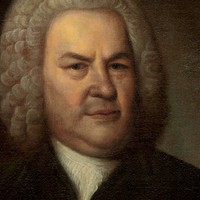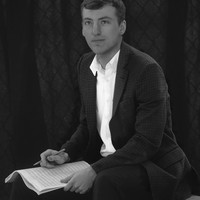The SPCO on Tour at Bravo! Vail Music Festival



Johann Sebastian Bach spent most of his professional life in church positions, responsible for composing sacred music for weekly services and special events. One of the few periods in which Bach focused on secular music began in 1717 with his move from Weimar to the liberal, open-minded court of Prince Leopold of Anhalt-Cöthen, who gave Bach both the freedom to explore instrumental forms and a talented ensemble to perform the new works. Compositions from this period include the Brandenburg Concertos, most of the suites for solo instruments, and many lost concertos.
Church duties again consumed Bach after he moved to Leipzig in 1723, but in 1729 he found a new secular outlet as director of the Leipzig Collegium Musicum, an ensemble of professional and amateur musicians that performed weekly concerts. To meet the high demand for music, Bach regularly mined his catalog of old compositions, especially the instrumental music from Cöthen. At least six concertos were recast for harpsichord, presumably to capitalize on the wealth of keyboard virtuosos—Bach and his sons—in the Collegium’s ranks.
Of the six solo keyboard concertos Bach compiled around 1738, the fifth, in F minor, is the shortest. The outer movements probably came from a lost violin concerto, and the middle movement reworked the Sinfonia from a 1729 cantata, Ich steh mit einem Fuß im Grabe, which itself likely stemmed from an even earlier oboe concerto. The opening movement is a prime example of the ritornello approach to concertos that Bach adopted from Vivaldi; thick tutti statements by the orchestra anchor the form and surround the light-textured, developmental solo flights. The Largo unfurls long skeins of colorfully ornamented melody, winding over a delicate backdrop of pizzicato strings and halting on an unresolved chord that leads directly into the Presto finale. In contrast to the rolling continuity of the Largo, the finale emphasizes fragmented motives and echoes that seize upon forte and piano contrasts.
Aaron Grad ©2014

The first movement of the work was commissioned by Bravo! Vail in celebration of Anne-Marie McDermott and was premiered on June 25, 2022 by Anne-Marie McDermott and St. Paul Chamber Orchestra. The remainder of the work was commissioned by Anne-Marie McDermott and The Saint Paul Chamber Orchestra with support from Justus and Elizabeth Schlichting, and premiered at Ordway Concert Hall in St. Paul, Minnesota.
Much of my work is inspired by places and cultures around the globe that can feel remote to many Westerners like myself. I try to write music that reflects my own experiences in these places and my interpretation of what I often find to be beautiful and universal themes, rather than be the voice of people that live in circumstances much different from my own.
Samaa’ means “sky” in Arabic. In this work I had specific images in mind for each movement. First, I recently traveled to Yemen, a place I found to be almost mystical, saturated with beauty and mystery. But Yemen is in the midst of a decade-long conflict with devastating and long-term impact for Yemenis. I traveled with a man named Kais. Kais guides in Yemen to support 17 of his family members. On a long drive through the desert, he told me a story about how he once took a public bus through Houthi territory on the way to Sana’a, the capital, and how on the way he saw missiles falling from the sky. He told an elderly woman traveling next to him that the missiles were several kilometers away and that she should not worry.
This image of Kais and this woman traveling through a dangerous war zone, missiles raining down around them, is to me sweeping, moving, and epic: a testament to the lengths people can go simply to live their lives. And while just an image to me, it is something very real to them. It is something I cannot personally describe or attempt to portray. The fear they must have felt, the urgency, the overwhelming basic need to see their loved ones. And yet I am moved by it, moved to express how I feel about that image in the work that I create. This first movement, titled “Sky,” is generally solemn and reflective, with outbursts of energy called and answered by several “incantations” which occur throughout the movement.
The short interlude that follows, scored for the solo piano and percussion, is titled “Stars.” When I have trouble sleeping at night, sometimes I’ll think about the stars I’ve seen in the most remote of places, in jungles and plains and mountains. This feeling of knowing I’m sleeping under the same sky I saw then grounds me and gives me some small comfort.
The final movement, “Moon,” is another specific memory, of a night I had in Iran traveling with my friend Jacob and our guide Abdullah. We had visited the ancient ruins of Persepolis that day and were staying at a 1000-year old caravanserai, where Silk Road traders would trade and park their camels to rest overnight. At some point, Abdullah reached into his trunk and pulled out a jug of wine he and his mother had made together in Shiraz (alcohol is illegal in Iran). We drank the wine underneath an arch from the era of Persepolis as the moon shone above us, talking about everything, life, love, travel, loss.
This piece is not a personal travelogue, or a love letter to places I’ve visited or people I’ve met. It’s an attempt to portray the poignancy and beauty of what I felt in moments while in other worlds, to evoke the mystery and magic and continuity of the sky, and a broader humanity that we all share.
Chris Rogerson ©2024

The charming tale behind Johann Sebastian Bach’s original 1791 work for keyboard is well-known, if not reliably-sourced — the work was commissioned by a Count, who on many sleepless nights would summon Bach’s pupil, Johann Gottlieb Goldberg, to “play me one of my variations" to lift his spirits. (Arranging this work during the opening stages of the pandemic, it became quite personal and therapeutic for me as well.) Beginning with a heavenly Aria, Bach sets the bass-line to 30 variations in G Major (except for the three variations in G minor), exploring the extremes of keyboard technique, counterpoint, mood, and style. With nine canons punctuating the work like Grecian columns, in-between lie all kinds of flavors: fugue, menuet, French overture, chorale, invention, gigue, etc. Add to that the thematic motives tightly knitting the variations together, and Bach’s compositional wizardry is on full display.
But it was the intimacy of the work, the virtuosity, and the variety of characters that convinced me (and SPCO violinist Daria Adams, who proposed the idea to me) that Goldberg was ripe with potential to arrange for my colleagues in the SPCO. The work becomes a tour of the orchestra and its musicians, and the instruments add their unique colors as a painter splashes color on the black-and-white frames of the earliest moving-pictures. Whatever character might be present in the music — whether stark (such as the famous “Black Pearl” variation), sweet (Var. 13), or just plain fun (Var. 11) — my intent is to magnify it here through the orchestral lens.
Bach is among the most revered composers of all time, and he is truly my number one. His music must be treated with the utmost respect, and the greatest success of this arrangement will remain Bach’s own ingenuity. Yet alongside the gravitas of Bach’s music is his fantastic sense of humor. (I highly recommend a quick internet search on “Bach Goldberg quodlibet.”) With an entire orchestra available to render a solo keyboard work, I felt freedom to flesh out textures and voices, or pare things down as I felt served the music.
A word about the subtitles: I began nicknaming each variation just as a way to tell all the Goldberg "children" apart as I worked, referencing music theory, world events, my reaction or approach to each variation, or just wordplay. But these rather free-association titles became a sort of window into how I experience Goldberg, and they stuck. Maybe because they grant permission to mere mortals like me and you to engage Bach’s music on a personal level — it's still Bach, but Bach reimagined. My hope is that more people may experience the riches of Goldberg in a new light.
James Ferree ©2022
Anne-Marie McDermott, piano
The SPCO and Anne-Marie McDermott give the world premiere of a piano concerto by Chris Rogerson — the first of three Symphonic Commissioning Project premieres and a Bravo! Vail commission in honor of McDermott’s 10th anniversary as artistic director.
Get driving directions and find nearby parking.
Find dining options close to the venue.
View seating charts to find out where you'll be seating.
SPCO concerts are made possible by audience contributions.
For exclusive discounts, behind-the-scenes info, and more:
Sign up for our email club!
